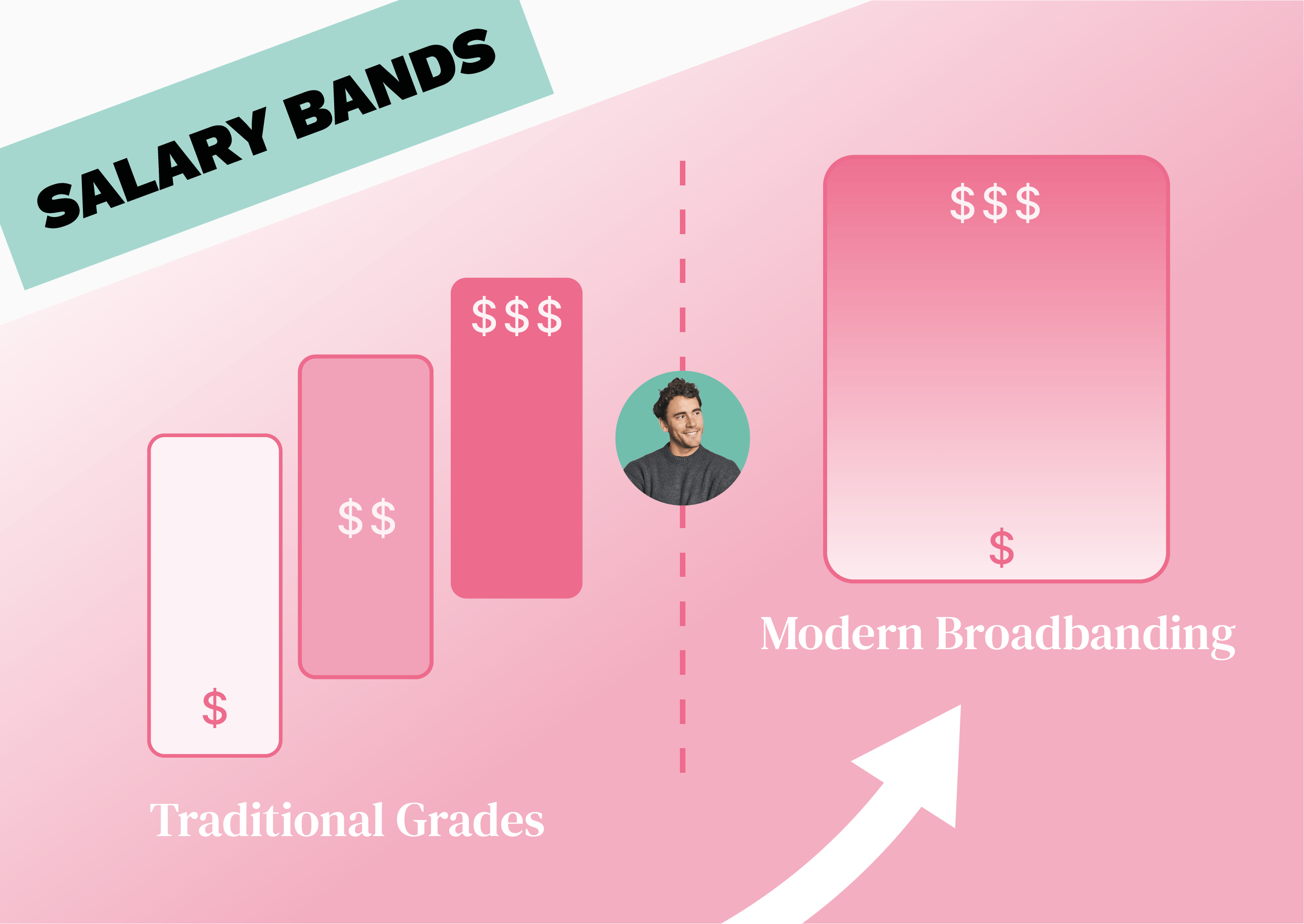Around 90% of organisations use a formal salary structure to manage pay, according to Mercer. That’s a pretty reassuring number, until you realise how many of those structures are already out of date. You see, salary structures were never meant to move fast. Most were built for a world where jobs changed slowly and annual pay reviews were enough to stay competitive.
That world doesn’t exist anymore.
New skills now appear faster than job titles can catch up, and inflation has made “stable” feel like a distant memory. Yet, most companies are still working within the same framework they built decades ago.
So here’s the question: what if your pay design could move as quickly as your business does?
That’s the idea behind dynamic pay design. It’s a new approach to compensation that replaces slow, manual updates with flexible, data-driven systems that evolve in real time.
Traditional salary bands are too limited for the modern workplace
Imagine a fast-growing European tech company with 250 employees. Last year, it invested time and resources in building its first set of salary bands, which were all carefully benchmarked and documented. Everyone around the boardroom table felt pretty confident they’d future-proofed their pay structure. But less than six months later, the company’s efforts were already starting to age more like milk than fine wine.
The company’s data team was now double the size, bringing in new analytics roles that didn’t exist when the bands were designed. Meanwhile, inflation had cooled in a few regions, and competitors were offering hybrid flexibility premiums to lure engineers back from the office. Suddenly, the “fresh” salary data the tech company had relied on to create those bands now looked painfully outdated.
This tech company is far from alone. According to Mercer’s 2025 QuickPulse Compensation Planning Survey, 74% of companies adjust their pay structures only once a year. In today’s market, that means decisions made in January are likely already misaligned by summer. Roles evolve faster than review cycles, and by the time updated bands roll out, they often lag real-world pay trends by months.
Let’s face it: markets shift weekly, if not, daily. So, when salary structures don’t keep up, new hires are brought in at or above the pay levels of longer-serving colleagues — a concept known as pay compression. This puts a serious strain on morale and forces HR teams to play a constant game of catch-up.
And if they fall into the trap of waiting for the next review cycle to adjust bands, this means organisations can’t respond to emerging skills shortages, new technologies, or regional pay pressure until it’s too late.
Introducing dynamic pay design as the solution
Instead of moving at the snail pace of traditional structures, dynamic pay design moves at the speed of work. It continuously updates salary ranges, fed by live market data rather than static annual reviews. It’s a shift from rigid, one-off adjustments to a system that evolves in real time, and in line with any changes to roles, skills, and market conditions.
The main value of pivoting to a dynamic approach is the control you gain. Where traditional pay structures rely on fixed cycles and manual reviews, dynamic pay design creates structured adaptability, allowing organisations to respond to change without losing consistency or fairness.
The building blocks of a dynamic system
At its core, the model rests on four interconnected pillars: data, technology, governance, and communication. Let’s look at how they come together to build a truly dynamic pay system.
Data as a foundation
Dynamic pay design begins with data that tells the truth about today, not last quarter. Instead of relying on static survey datasets, forward-thinking organisations blend multiple data sources, such as:
- Internal pay data
- Live salary benchmarking feeds
- Job market signals such as salary data from recruitment platforms
This mix gives a much clearer picture of what specific roles are worth right now across regions and experience levels.
Time to take action: Start by auditing the data behind your current pay bands. Where does each figure come from, and how old is it? If your benchmarks are more than a year out of whack, treat that as a red flag. Layer in at least one live data source. For example, use Figures to connect live market data directly to your pay structure, so updates happen smoothly and with less manual effort.
Technology as the enabler
If data is the foundation of dynamic pay design, technology is what keeps it moving. Most HR teams still rely on spreadsheets to manage salary bands, which works … until it doesn’t. Updating data manually and checking for consistency take serious chunks of time, putting the information out of date by the time it’s reviewed.
Modern compensation tools remove a lot of that friction. They automate repetitive jobs like tracking benchmarks or flagging when a role’s pay range starts to slip. Instead of spending weeks re-running reports, teams can see what’s changing in real time and decide what actually needs attention.
Time to take action:
List the manual steps it currently takes to update a salary band — then look at what you can automate. If you’re still juggling spreadsheets, start by centralising your pay data in one system. From there, add automated alerts or workflows to flag when new market data shifts your existing ranges.
Governance as your guardrails
Governance is what keeps everything consistent when pay ranges start to move more often. It sets boundaries, like:
- How frequently you’ll review data
- What counts as a meaningful market shift
- Who needs to be involved in a sign-off.
Good governance also protects fairness. When you boast a transparent and repeatable process, people are more likely to trust you’re not making pay updates on a whim. And this becomes even more important as pay transparency laws continue to evolve across Europe — you need to be able to show the reasoning behind each decision.
Time to take action: Define your own “rules of engagement.” Set clear thresholds for when a pay range should be reviewed (for example, when market data moves by more than 5%) and agree who signs off on updates. Document the process in a short internal playbook, so every future adjustment follows the same steps to build credibility.
Communication as the glue
As pay structures become more dynamic, your communication needs to evolve alongside them. Employees don’t expect to be part of every data refresh, but they do want to know how you make decisions about pay and what those updates mean for them. When you share that information clearly, people see movement in pay as a sign of fairness and maturity, not uncertainty.
Time to take action: Bring your managers into the conversation early. Create a short set of talking points or FAQs explaining how dynamic pay works and what triggers changes. Equip them to answer the “why” behind pay decisions before employees even have to ask.
Put dynamic pay design into motion with Figures
The world of work isn’t slowing down any time soon, and your pay structures shouldn’t either. Building a truly dynamic approach to compensation starts with small, practical steps: tighten your data sources, automate what you can, and set clear rules for when and how ranges are updated.
The goal here is confident adaptability. When your pay design moves in real time, you can stay fair and competitive, that’s a given. But most importantly, you’ll also keep your people engaged even as markets shift.
Figures helps you achieve all the benefits of dynamic pay. Our platform brings together live market benchmarking, automated salary band management, and transparent pay review workflows, giving HR and People teams the tools to design pay systems that evolve alongside their business.
Ready to explore what dynamic pay design could bring to your organisation? Book a free demo or reach out for a personalised walk-through with one of our compensation experts.
Summarize this article with AI
No time to read it all? Get a clear, structured, and actionable summary in one click.
.png)





